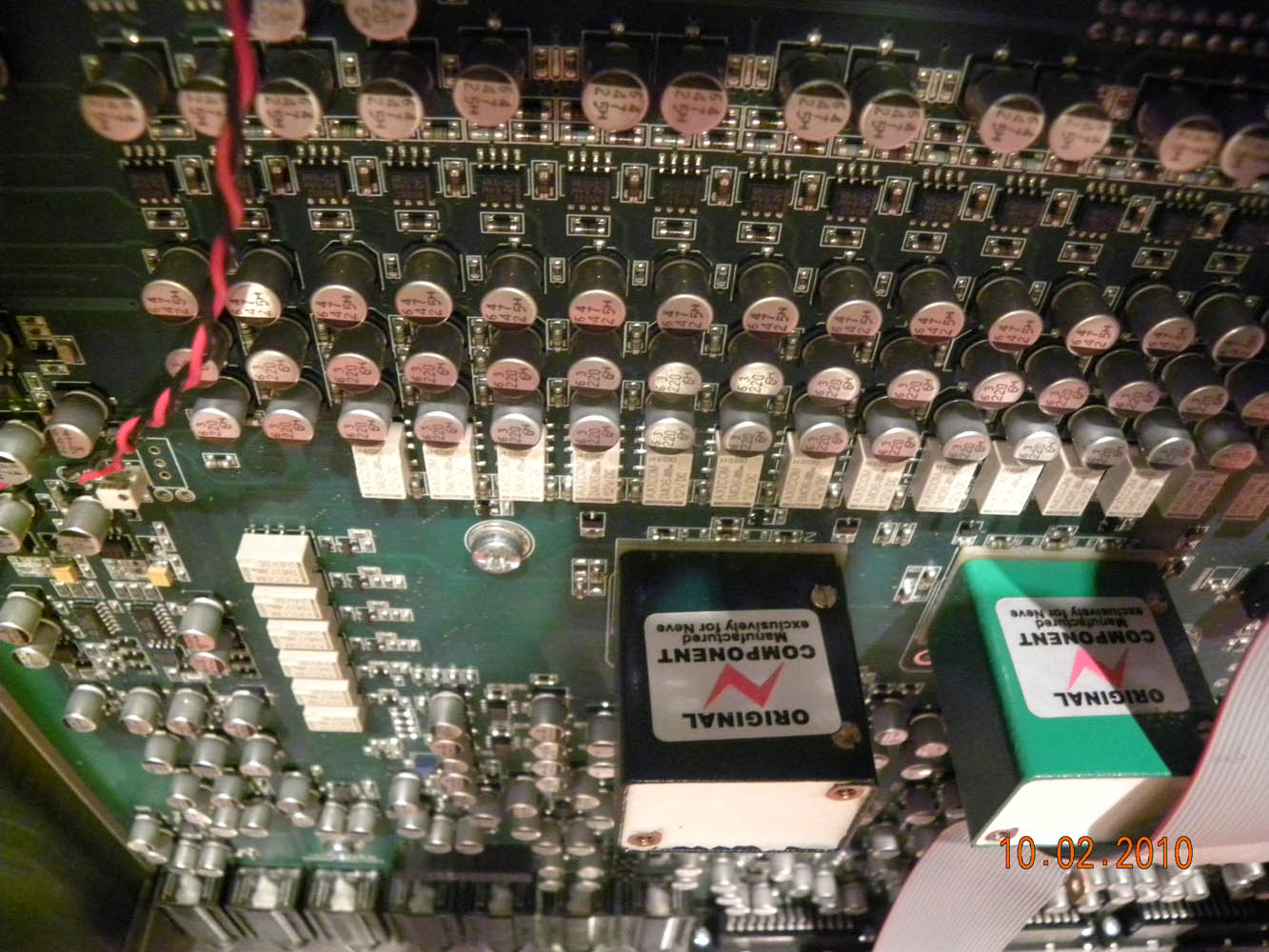bobtheninja
Active member
- Joined
- Sep 5, 2010
- Messages
- 31
Hi all,
I bought a 8816 from a guy for cheap, knowing that there was a problem with it not turning on. It would only blink and the VU needles would pin rhythmically as the lights flashed. I had my tech guy look at it and he swapped a burnt transistor and it worked decently for a while, but only on channel 9-16. After a couple of months the same thing happened with the needles pinning and the blinking light, so I sent it to the Norwegian dealer of AMS Neve. They couldn't figure out what's wrong with it and shipped it to AMS Neve in England. They tell me that capacitors have dried out on all channels and that it will be too expensive to swap them out, so it needs a new motherboard, which will cost me around 800 GBP excl. vat. Which is way more than I hoped to invest in getting this up and running.
Doesn't it seem strange that the caps should dry out on a box that was released around 10 years ago? I don't have any gut shots here seeing that my box is in England at the moment, but I found some online. Do you think that it would be possible for me to recap it somehow, or does it not use off-the-shelf components?
The insides looks like this. Sorry about the picture being upside down, but it makes it easier to read the component values at the very least. Edit: more pictures at http://pvdesign.ucoz.com/photo/devices/neve_8816_summator/7

What do you guys reckon are my alternatives? Sell it and cut my losses? Try to wrangle a replacement out of the kindness of AMS Neve's hearts? Recap it myself on cosy winter nights?
I bought a 8816 from a guy for cheap, knowing that there was a problem with it not turning on. It would only blink and the VU needles would pin rhythmically as the lights flashed. I had my tech guy look at it and he swapped a burnt transistor and it worked decently for a while, but only on channel 9-16. After a couple of months the same thing happened with the needles pinning and the blinking light, so I sent it to the Norwegian dealer of AMS Neve. They couldn't figure out what's wrong with it and shipped it to AMS Neve in England. They tell me that capacitors have dried out on all channels and that it will be too expensive to swap them out, so it needs a new motherboard, which will cost me around 800 GBP excl. vat. Which is way more than I hoped to invest in getting this up and running.
Doesn't it seem strange that the caps should dry out on a box that was released around 10 years ago? I don't have any gut shots here seeing that my box is in England at the moment, but I found some online. Do you think that it would be possible for me to recap it somehow, or does it not use off-the-shelf components?
The insides looks like this. Sorry about the picture being upside down, but it makes it easier to read the component values at the very least. Edit: more pictures at http://pvdesign.ucoz.com/photo/devices/neve_8816_summator/7

What do you guys reckon are my alternatives? Sell it and cut my losses? Try to wrangle a replacement out of the kindness of AMS Neve's hearts? Recap it myself on cosy winter nights?

